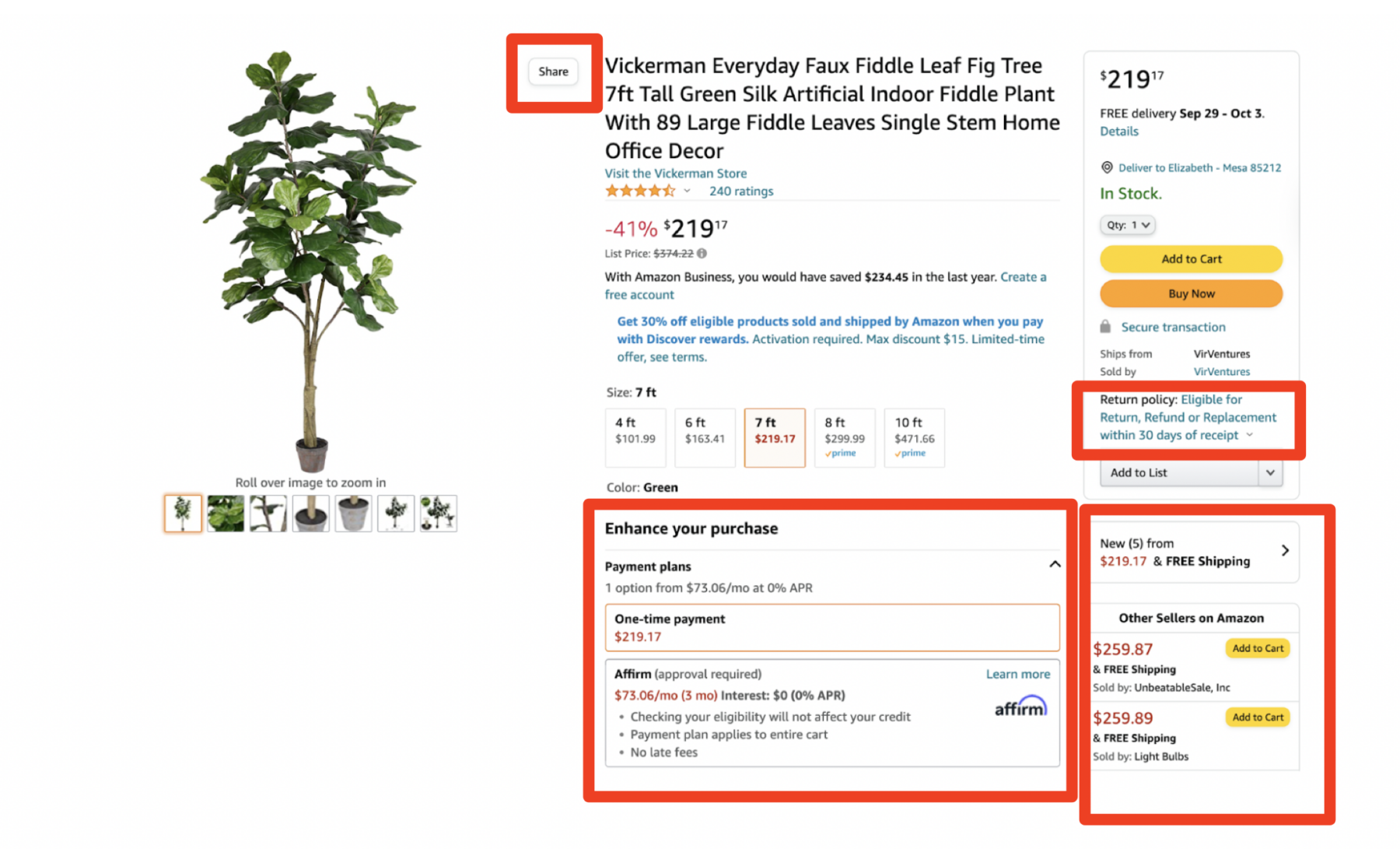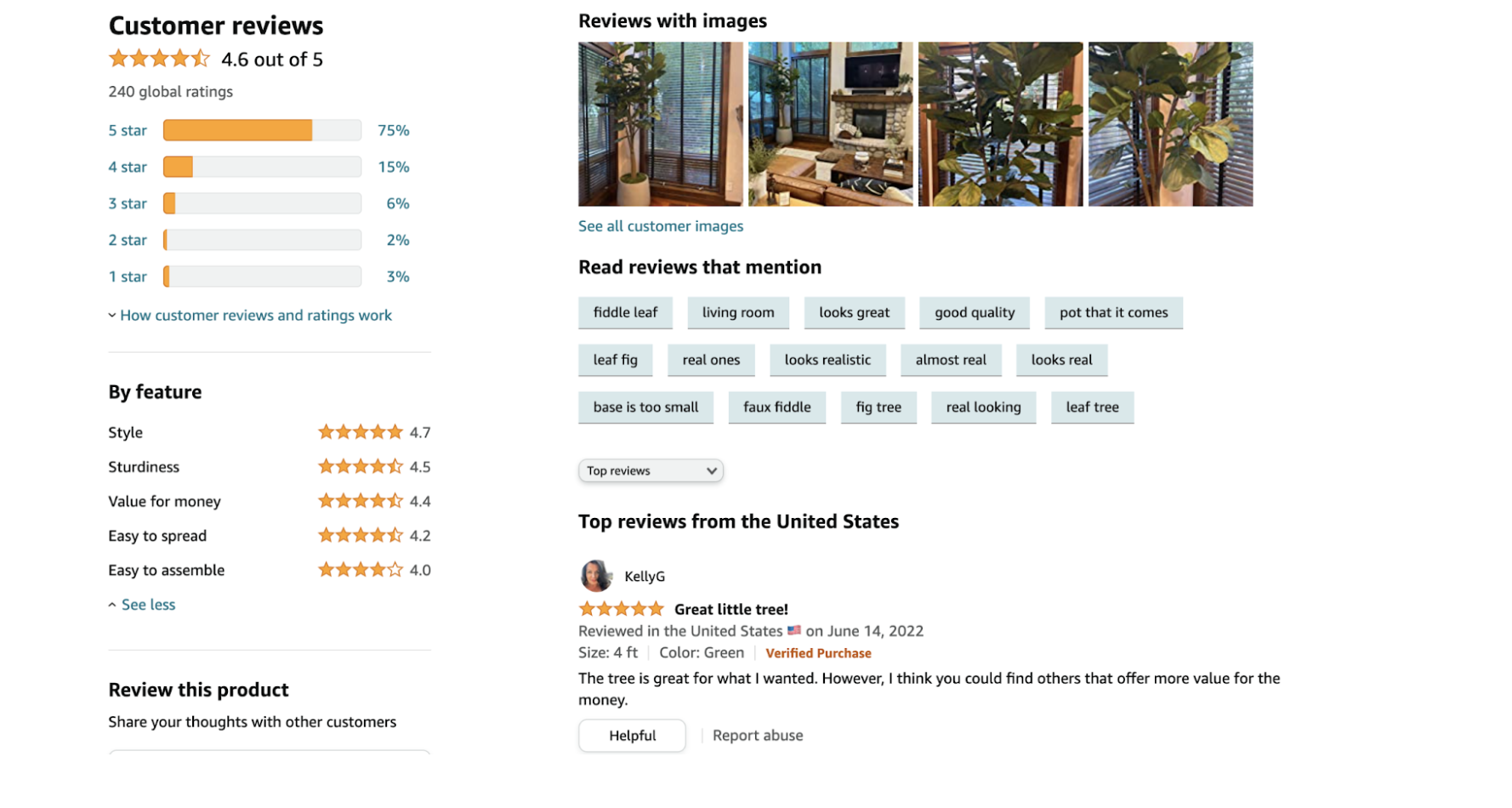AERPOWER Blog
We really, really love what we do.
Can we ‘Amazon’ the aviation industry? When I mentioned that name, I bet you immediately knew what it is synonymous with. Amazon and other shopping services have infiltrated our way of buying by facilitating quick and easy ways to buy and receive goods online. Some may not like this or are against this concept, but reality is Amazon is thriving due to creating convenience in our lives. And as we think about our efforts to continue to evolve marketing in aerospace, I figured why not break down what works for many of these new convenient shopping experiences and see what we can apply. For the purpose of the exercises noted in this blog, I am going to break down a recent experience from a Fiddle Leaf Fig Tree I bought on Amazon.
Give me all the Information
Taking my Amazon example, what you will often see is multiple pictures, including instructions. This matters to the buyer for many reasons. Not only do I want to see multiple angles, but I want to see it in real life situations if I can. I want to see dimensions, information about the company that is selling the product, product in use, reviews, etc. An example to follow:

And this example is only 1 section of the long scrolling page available.
Reviews Matter
Now this is where we often find the most value – keeping in mind to look past sometimes confusing reviews on Amazon due to the lack of policing. This is an area that aerospace companies may get fearful of, but hear me out – being able to review others’ experiences matters. Seeing how they use the product in real-time, understanding what people love and hate about a product matters if we truly want to help people buy what’s best for them. Do you have an area on your website for testimonials? How about when a customer wants to buy, do you offer references they can speak to in order to understand how they like the product and how they use it?
Same example above as we continue:

Here I can see beyond just overall rating, but ratings by feature, so I, the buyer, can determine if this is right for me based on the features I value most.
Note that while this screenshot is from the bottom of the page, this information is also featured, in short form, higher up for quicker decision making.
Make it easy
Here is another potential source of anguish for us aerospace folks. We often think that our process for buying is easy, but if you were to have an outsider look at it – would they agree? Ask yourself these questions, is it easy to get information? When I receive the product, will I understand the intended use? I can anticipate an argument, or defense for people who sell products in our industry. No, I don’t expect it to be easy to buy a Cessna 172. . . . but I do expect that I would understand everything there is to know about how the aircraft operates, what other buyers feel about the aircraft, and how soon I will receive the aircraft. I expect to understand how to maintain it. I also expect to understand what resources are available to me to get help when needed. Yes, this is a multi-million dollar aircraft so one would appreciate that expectations would be high. This doesn’t mean the buying process should be greatly different than if I was buying an aircraft accessory either. The goal would be to look at my audience’s buying experience from their point of view.
More on my Amazon tree example:
Check out how they are also serving me options for a similar tree at a lower price point and a pot, knowing that I most likely would need that as well. This helps buyers buy beyond the original intent. And we want them to spend more money with us, right?!
Respond and always Communicate
This goes beyond what’s listed on the website. Do you have contact information easily accessible on your website? Do you respond to social media inquiries? Do you engage when someone comments on a post? Another way to think about it is, the more you communicate, the more your product/service is top of mind. Please don’t mistake this for poor selling practices of aggressive car salesmen, think of it more in terms of how you can be helpful. Have you thought about all the potential questions, and in what part of the buying process they can come up?
Another communication error I see often is proactive communication on areas of potential challenge or delay. What could cause a shipment delay? Tell the customer up front. What if the product shipped out, you provided a shipping confirmation with tracking details, and it’s held up or late due to the carrier. Are you actively watching this to help the customer feel good about the fact that the product will still arrive, even if late? Or are you assuming this is out of your control, so you leave it to the shipping company and customer now?
And post sale, after the customer receives the product, even after a service is performed, are you providing an opportunity for feedback? Are you calling and checking in to make sure the customer is happy and understands the use of their product? Hint – This is also a great time to ask for a testimonial!
More of my Amazon example reference:
They answer user questions, good or bad, right on the webpage for the product itself. This is a great example of customer service and helping buyers buy!
What can I do now?
Write down your buying and selling process. How do they align? Can you see gaps?
Can you review this process with a prospective buyer or previous customer and get their input?
Draft a list of “most asked questions” that you have heard/seen about your product/service. Ask your sales team for this input. This is not only a gold mine of information for you to have readily available for future potential customers, but also can facilitate valuable content.
Remind ourselves that this does open up a level of transparency to our audience that not all can appreciate. And not all will be positive. But this is how we learn and fix. This is how we get better. Good experiences become great experiences when we listen to our audience. When we understand their needs and wants beyond the product or service itself.
✍️ About the Author
Lisa Sifuentes is the Founder and CEO of AERPOWER Aviation Marketing. With over 20 years of experience in aerospace and defense marketing, she has partnered with OEMs, MROs, and aftermarket companies across multiple sectors to build visibility and drive growth. Lisa specializes in aligning marketing and sales strategies so brands can strengthen their positioning, reach long-cycle buyers, and achieve measurable results.